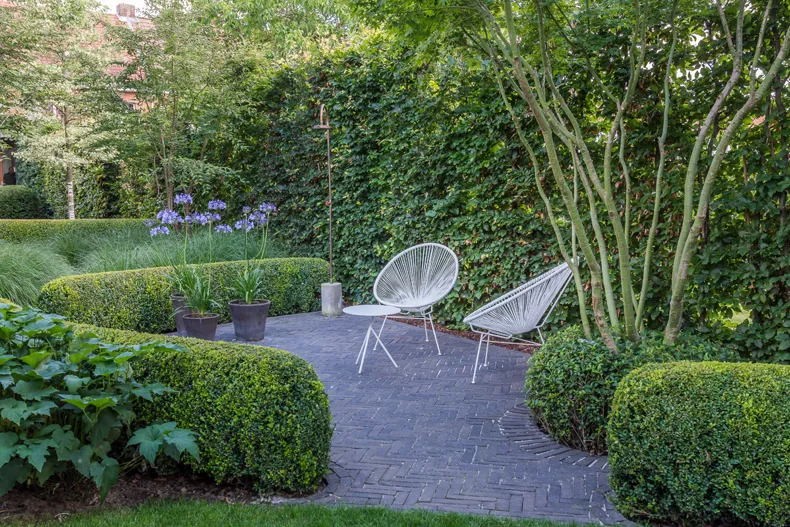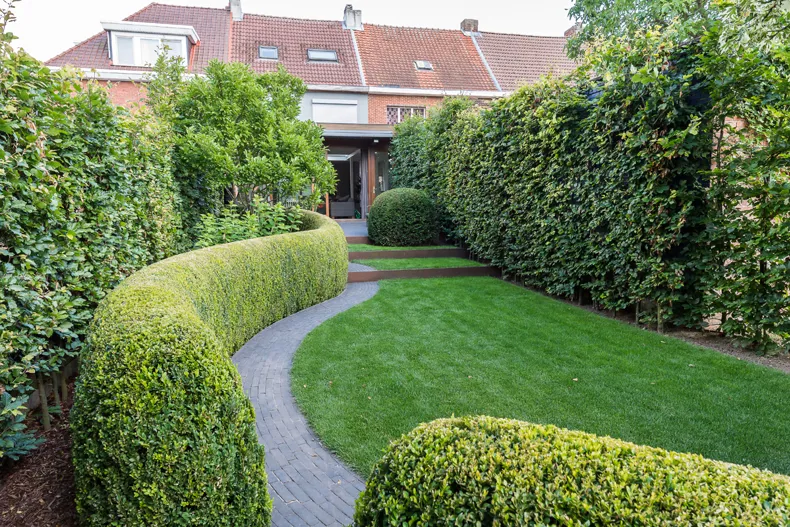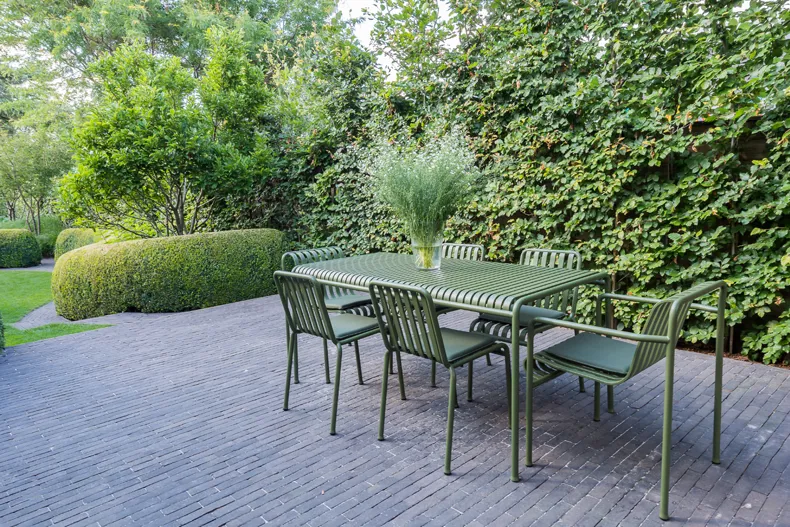GARDEN DESIGN
Duo Verde (Jeroen Verheyen)
CLAY PAVERS
PROCESSING
herringbone bond, random bond, half bond
Photos: © VTA – @ Annick Vernimmen
Sustainability and a natural appearance as the trump card of the SeptimA Anthracite clay paver
Dynamic design breathes new ‘green’ life into city garden


When it came to designing this city garden, the owners gave Jeroen Verheyen (Duo Verde) carte blanche. Their only requirement was for the design to be transparent so that they would still be able to keep an eye on the children from the house when they were playing out in the garden. The original garden which consisted of a lawn, overgrown shrubs and an old fir was to be totally transformed. The idea was for the design to give the garden a new dynamic where the green elements would embrace the house so to speak.

Green dynamic
Jeroen Verheyen created this dynamic by planting half-height rounded box hedges in an alternating arrangement to create semi-open rooms, each one with its own character. A path laid using SeptimA Anthracite clay pavers leads from the first terrace by the house and leads down alongside a number of grass steps deeper into the garden. The steps were finished in corten steel, creating a wonderful combination with the SeptimA Anthracite clay pavers. The semi-open garden rooms host such features as a graceful mound of decorative grasses and an additional sun terrace created using the same Anthracite clay pavers laid in a herringbone bond. With its natural appearance, this sustainable paving material fits in seamlessly with the decorative curves that characterise the design.
At the far end of the garden, the children have a small lawn area where they can play to their hearts’ content and a playful tree house which is sturdily built around an old fir. In the evening, the owners can transform the garden into a magical light display at the push of a button, with the trunks of both magnolia, maple and flowering plum trees being lit by accent lighting.

Spring fresh box
The box shrubs and hedges are meticulously tended and cared for and provide wonderful spring freshness. What that also means is that the dreaded fungal disease and box tree moth are not given a chance to attack the plants. Nowadays, there are also hybrid varieties of box which are resistant to this fungal disease.

Biodiversity
Jeroen Verheyen on the ‘garden of the future’: “I believe that we are going to start creating more ‘wilder’ gardens with a much wider variety of plants and shrubs. At the moment, we are using the same plants a bit too much which is, of course, not good for the bee population, for example, and has an adverse effect in terms of diseases. We are going to have to combine more by using a wider range of perennials in order to attract natural forms of pest control, especially with society’s strong opposition to chemical pesticides.”
Jeroen Verheyen on the ‘garden of the future’: “I believe that we are going to start creating more ‘wilder’ gardens with a much wider variety of plants and shrubs. At the moment, we are using the same plants a bit too much which is, of course, not good for the bee population, for example, and has an adverse effect in terms of diseases. We are going to have to combine more by using a wider range of perennials in order to attract natural forms of pest control, especially with society’s strong opposition to chemical pesticides.”
Comparable case studies

Garden at London’s Royal Academy of Arts by Tom Stuart Smith
Tom Stuart-Smith has created a new garden at the Royal Academy in the heart of London. In a previously neglected space, closely surrounded by buildings and with very little natural light, the Keepers House Garden creates a lush green retreat and café seating area – just a few hundred meters away from the noise and bustle of Piccadilly Circus.











